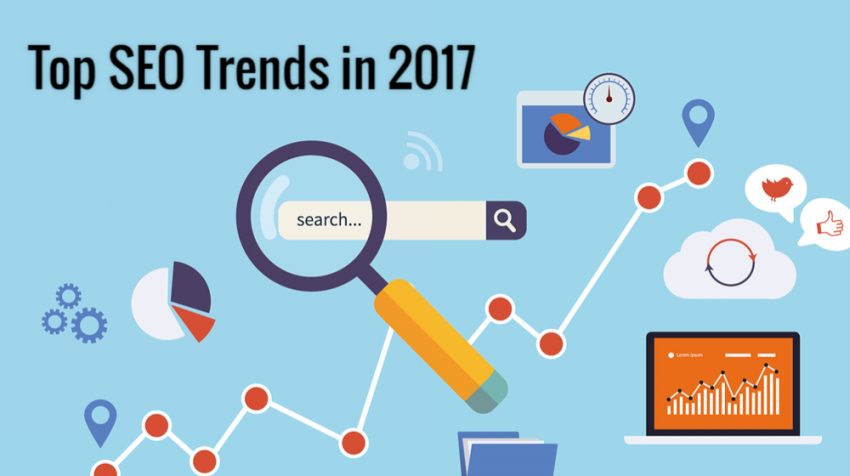
With the second quarter of 2017 upon us, and extraordinary theory over what the year has in store for SEO, I have chosen to compose an article concentrated on the most vital distinct advantages in site design improvement for the year. To a limited extent 1 of 2, we will discuss “Client Intent and RankBrain”, “Organized Data and Google My Business” and “Local SEO Services“.
User Intent & Google Algorithm
One of our greatest concentrations in 2017 will be to consider and organize “Client Intent” and “Google Algorithm” when building up your substance and website pages. Look at these things coupled together, not independently.
Doubtlessly, web indexes are concentrating on the nature of the substance and are getting more brilliant about how to arrange pages. Before, the more catchphrases you had inside your substance and the more connections you had to your site, the better it would rank – however the majority of that has now changed. We ought to no longer consider these things as the sacred chalice of rank. Connections and watchwords are as yet essential, yet rather than the amount we ought to concentrate on quality.
All in all, what would it be advisable for me to do to get all these awesome things together?
Make incredible substance with focused catchphrases that will normally get quality connections!
“That is difficult” – you may contend. Indeed, SEO shouldn’t be simple and we are intended to offer a client what they need. Thus, in the event that you make great substance you will normally be utilizing focused on catchphrases (watchwords identified with your substance), and if the substance is great you will actually observe joins indicated it.
Client aim will be very influenced by Google Algorithm.
What is Google Algorithm?
Google Algorithm is the name that Google absolved its machine-learning manufactured framework. It is utilized to help handle indexed lists and return results to the client and keeping in mind that I trust it assists with the most widely recognized pursuit questions, it is much more essential for uncommon inquiry inquiries or questions that have never been seen.
Google uncovered that 15% of its hunt questions have never been seen, which brings about around 500 million ventures a day that Google needs to “figure” about the best outcomes to convey.
Google Algorithm works in the following way:
Google Algorithm gets and deciphers the inquiry and decides look goal: “this individual needs to comprehend what the best music collections of 2016 are” and after that chooses the positioning signs to think about what an ideal outcome for the client would be. Positioning elements are a few, including:
• Keywords
• Freshness
• Engagement
• Related Topics
• Domain Authority
• etc…
What happens is that Google recovers come about in view of these positioning variables, and afterward modifies the outcomes by modifying positioning elements in view of signs that clients give.
On the off chance that a client scans for “best collections of 2016”, the “engagement” and the “freshness” of the page, and additionally “area expert” are terrifically vital. To get to these outcomes, the client has offered signs to Google, and these signs are then translated and balanced keeping in mind the end goal to recover ideal outcomes.
For instance, Google may have seen that clients just tapped on pages that are from 2017 or late 2016 and thought “alright, it is indispensably essential to show pages that are later”. This can likewise clarify why you don’t generally observe similar outcomes, now and then even seconds after the fact, with a similar inquiry question.
Also, obviously, this all focuses to a similar way: create pages that are applicable to the client with the goal that Google can show content identified with your business. You have likely heard a couple times that “quality written substance is the final deciding factor”. Presently, like never before, this is a legitimate quote in SEO. What’s more, I will wager that this will be huge in 2017!
Structured Data & Google My Business
Organized Data
Web index crawlers are still machines, and in spite of the fact that web search tools enhance their calculation all the time (RankBrain, as one illustration), it is as yet valuable to illuminate web search tools what truly matters to your pages.
Utilizing Structured Data will permit the web search tools to better comprehend what truly matters to your pages, how they ought to be characterized, what reason they serve, and how they ought to be shown in Google.
In the event that you are offering items on the web, for example, utilizing proper Structured Data in view of Schema.org will tell web indexes the name, depiction, cost and condition, among numerous different attributes of your item. Commonly, those qualities will be legitimately shown in query items, both on the desktop and on a portable.
One imperative thing to note with respect to Structured Data is that “over improvement” by including more points of interest or watchwords on your Structured Data than those required will have an inverse impact and will prompt to potential debasement in rankings.
Google My Business
To finish the data you give by means of Structured Data, and to give less demanding access to potential clients/clients you ought to dependably utilize Google My Business when pertinent. Things like the landing page, business classification, telephone numbers, business hours, and so forth can be incorporated here.
All business data submitted is checked by Google’s group. Along these lines, Google will, in the end, expel subtle elements that are not exact or added just to attempt and acquire greater perceivability. A case of this is the “classifications” segment of Google My Business: on the off chance that you change this regularly or include an excessive number of disconnected classes, you will wind up losing perceivability on the classes your page doesn’t have a place with, and also on the classifications it does.
Neighborhood SEO
The neighborhood is a progressing region of change in Google, and we can expect that in 2017 the restricted query items will be much more observable and more impactful to both clients and organizations.
On the off chance that you are mindful to your site insights (and to the web as a rule), you will see that there has been late development in wording, for example, “… close me”. Google’s answer has been to recover business comes about close to the client playing out the hunt question. The same happens when, for instance, a client in Texas looks for “eatery”. Google recovery comes about near the client, as it looks bad to recover eateries in New York for a Texas inquiry, isn’t that so? Right!
You can read more about Local SEO in my last article (and in spite of it being focused for bigger organizations, the idea still applies to each neighborhood business.)
What would we be able to anticipate from neighborhood SEO in 2017?
More exact outcomes from Google to the client, and the expanded pertinence of the Google Maps functionalities. Less across the country results and more nearby outcomes.
Positioning signs for nearby pursuit
The most grounded positioning sign in Google Maps and Local Searches is basically the area of the business. Different signs can incorporate the typical SEO signs, (for example, area specialist, social notices, quality inbound connections, and so on.)
You may contend that nearby inquiries are one-sided by the area of the organizations nearest to the client playing out the inquiry, and keeping in mind that that may be consistent with a degree, it is additionally genuine that if clients discover your business significant for that same area, your business may really rank higher both in Google Maps and in the SERPs than contenders that are nearer to the client. In this, “RankBrain” likewise has a dynamic part.














